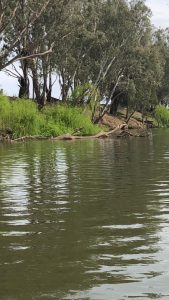Watershed Landcare AGM
Local landcare group, Watershed Landcare, held its Annual General Meeting last Friday, 23 November. The meeting was well attended and gave members an overview of Watershed’s activities over the past year as well as an opportunity to mingle and chat at the supper afterwards.
Watershed Landcare Chair, Viviene Howard outlined the group’s 2018 activities and her presentation acknowledged and celebrated the contirbution of the organisation and it’s members to environmental and natural resource management in our region.
“As Chair I’m continually surprised at how many people we touch in the community. As a group we have fantastic reach and do lots of great things for the environment as a result.” said Ms Howard.
Notable achievements of 2018 included attracting project funding to conduct on-ground works, as well as new funding for the Pest Cooordinator role; 7 field days with 250 participants;
the Mudgee Small Farm Field Days program and members efforts in growing tubestock for sale at the event; adoption of a new constitution and 3 year strategic plan; new partnerships and maintaining sponsorship for Green Day and making sure the event is sutainable.
The 10th annual Green Day got a special mention. The theme of this year’s event was waste and featured ABC TV’s Craig Reucassel as keynote speaker. It was the largest Green Day to date and Ms Howard thanked Green Day Coordinator, Beth Greenfield for her contribution.
“It was an amazing event and supremely organised.” she said.
The Communities of Practice groups, the Mudgee Microscope Group, Grazing Group, Women in Ag Group and Mudgee Bee Group, also remain a strong focus, bringing together diverse groups of people with similar goals. The 4 groups held 31 activities throughout the year focusing on members interests.
The election of office bearers for 2019 was overseen by returning officer, Julie Reynolds.
Ms Howard was re-elected as the Chair for the 2019 Commitee. Sonia Christie, Christine McRae and Hunter White will hold the positions of Vice-chair, Secretary and Treasurer, repspectively. Jane Young and Rosemary Hadaway will fill the other executive positions.
The Watershed Landcare Committee meets at 5:30pm on the first Wednesday of the month. The new Executive Committee will hold it’s first meeting in February 2019. All Watershed Landcare members are welcome to attend.
If you would like more information about any of our projects or would like to join one of our special interest groups contact our Coordinator, Agness Knapik, on 0435 055 493 or info@watershedlandcare.com.au.
Keep an eye on our Catchment Corner column for news and upcoming events, workshops and seminars.

 As well as something you throw on the barbie, snags are trees and branches which fall into and lodge into streams and rivers and form an essential part of river ecology.
As well as something you throw on the barbie, snags are trees and branches which fall into and lodge into streams and rivers and form an essential part of river ecology.